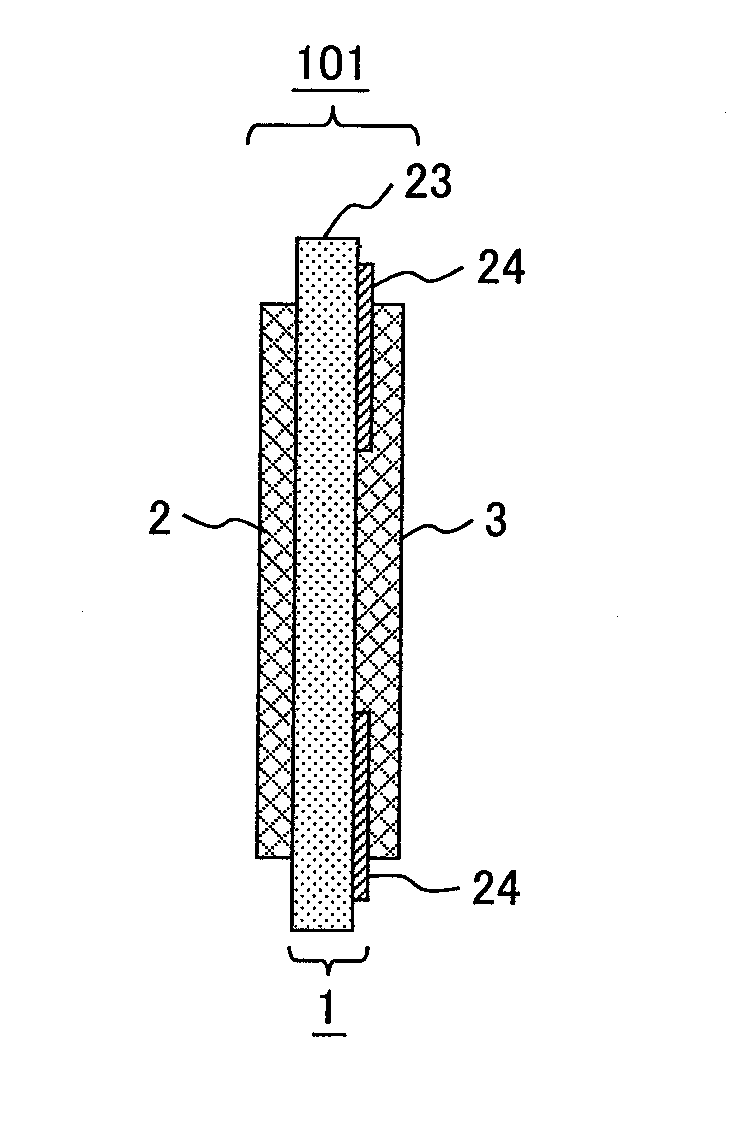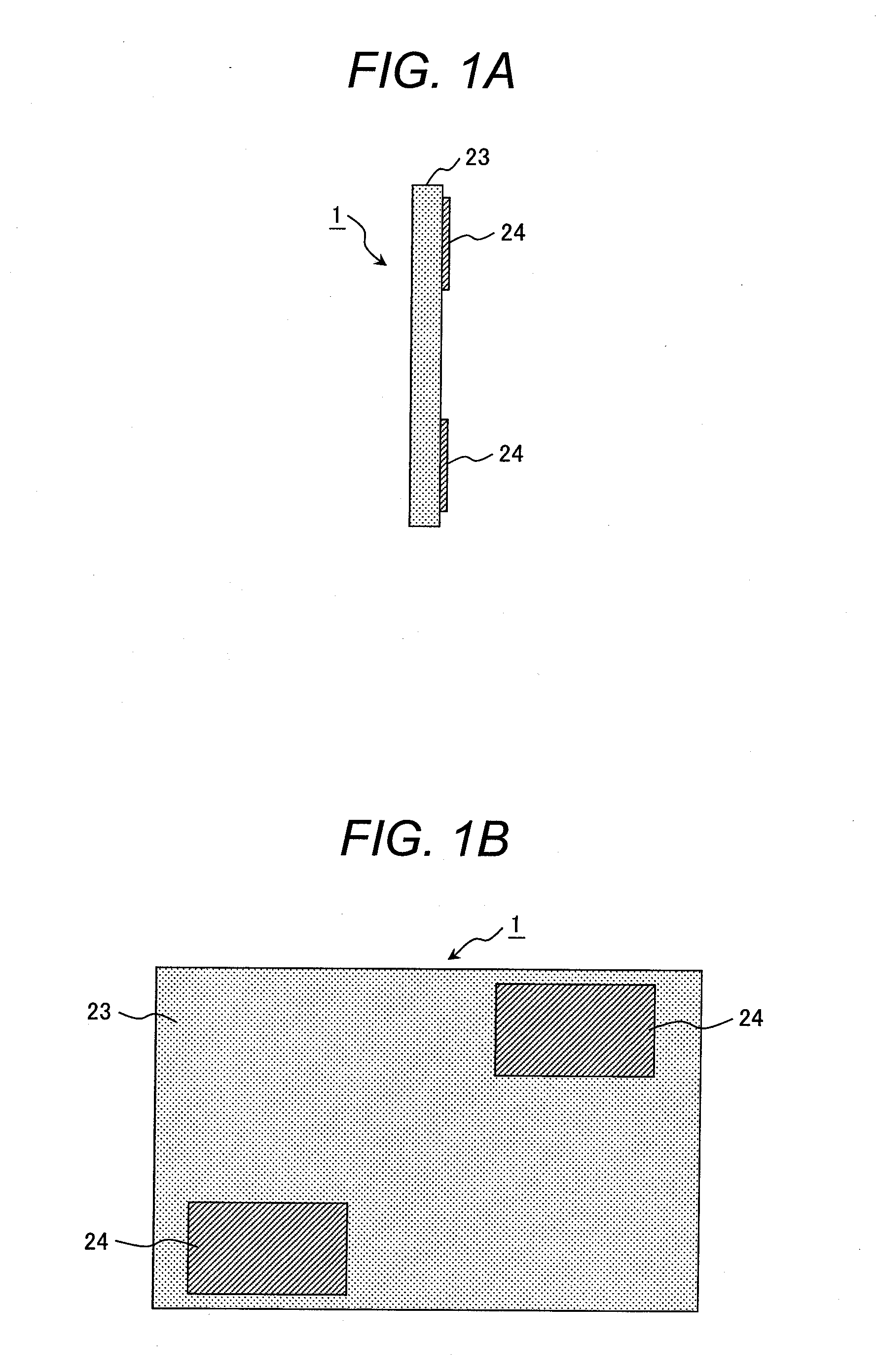Polymer electrolyte membrane, and membrane electrode assembly and polymer electrolyte fuel cell using the same
a technology of polymer electrolyte and membrane electrode, which is applied in the direction of solid electrolyte fuel cells, fuel cells, electrical equipment, etc., can solve the problems of reduced voltage, reduced mechanical properties, and high cost of fluorocarbon electrolyte membranes, and achieve excellent oxidation resistance, high output power, and good mechanical properties
- Summary
- Abstract
- Description
- Claims
- Application Information
AI Technical Summary
Benefits of technology
Problems solved by technology
Method used
Image
Examples
example 1
(1) Production of Polymer Electrolyte Membrane
[0092]A polymer electrolyte membrane 1 illustrated in FIGS. 1A and 1B was produced. FIGS. 1A and 1B are a cross-sectional view and a front view of the polymer electrolyte membrane, respectively.
[0093]With reference to FIGS. 1A and 1B, the polymer electrolyte membrane 1 includes a first membrane 23 (formed from an electrolyte A) serving as a substrate; and two plies of a second membrane 24 (formed from an electrolyte B) arranged on part of a surface of the first membrane 23.
[0094]The electrolyte A was a sulfomethylated poly(ether sulfone) having an ion-exchange capacity of 1.3 meq / g and a number-average molecular weight (Mn) of 8×104 g / mol, which had been prepared by the procedure described in Example 14 of Japanese Unexamined Patent Application Publication No. 2002-110174. The electrolyte A was dissolved to a concentration of 15 percent by weight in N-methyl-2-pyrrolidone (NMP) and thereby yielded a solution of electrolyte A.
[0095]The el...
example 2
(1) Production of Polymer Electrolyte Membrane
[0122]A polymer electrolyte membrane illustrated in FIGS. 3A and 3B was produced. FIGS. 3A and 3B are a cross-sectional view and a front view of the polymer electrolyte membrane, respectively.
[0123]With reference to FIGS. 3A and 3B, the polymer electrolyte membrane 1 includes a first membrane 23 (formed from the electrolyte A) serving as a substrate; and two plies of a second membrane 25 (formed from an electrolyte C) arranged on part of one surface of the first membrane 23.
[0124]The electrolyte C was a sulfomethylated poly(ether sulfone) having an ion-exchange capacity of 1.3 meq / g and a number-average molecular weight (Mn) of 10×104 g / mol which had been prepared by the procedure described in Example 14 of Japanese Unexamined Patent Application Publication No. 2002-110174. The electrolyte C was dissolved to a concentration of 15 percent by weight in N-methyl-2-pyrrolidone (NMP) and thereby yielded a solution of electrolyte C.
[0125]The s...
PUM
| Property | Measurement | Unit |
|---|---|---|
| temperatures | aaaaa | aaaaa |
| exchange capacity | aaaaa | aaaaa |
| ion-exchange capacity | aaaaa | aaaaa |
Abstract
Description
Claims
Application Information
 Login to View More
Login to View More - R&D
- Intellectual Property
- Life Sciences
- Materials
- Tech Scout
- Unparalleled Data Quality
- Higher Quality Content
- 60% Fewer Hallucinations
Browse by: Latest US Patents, China's latest patents, Technical Efficacy Thesaurus, Application Domain, Technology Topic, Popular Technical Reports.
© 2025 PatSnap. All rights reserved.Legal|Privacy policy|Modern Slavery Act Transparency Statement|Sitemap|About US| Contact US: help@patsnap.com



